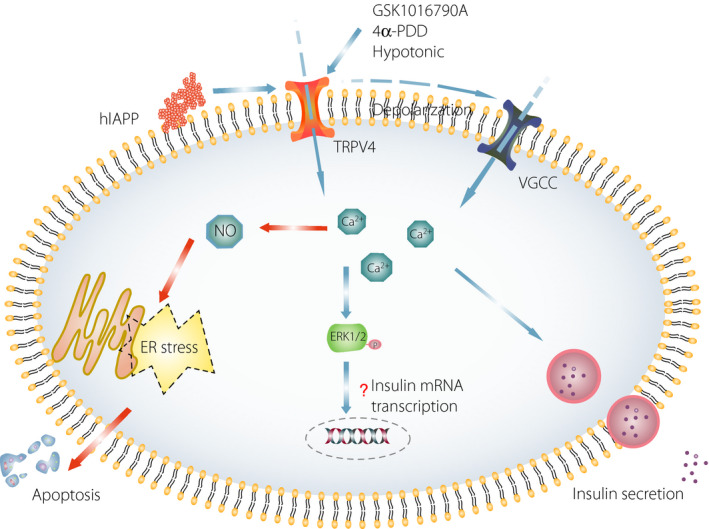Figure 1.

Transient receptor potential vanilloid 4 (TRPV4) activation affects insulin release and apoptosis from pancreatic ‐cells. In pancreatic ‐cells, the activation of TRPV4 can be involved in the regulation of insulin release and apoptosis through different mechanisms. In contrast, the activation of TRPV4 induced by hypotonia and agonists (GSK1016790A and phorbol ester 4α‐phorbol 12,13‐didecanoate [4α‐PDD]) can promote Ca2+ inflow, leading to plasma membrane depolarization, which elevates intracellular Ca2+ levels by activating voltage‐gated Ca2+ channels (VGCCs) in ‐cells, ultimately leading to insulin secretion. In addition, elevated intracellular Ca2+ levels promote Extracellular signal‐related kinase 1 and 2 (ERK1/2) phosphorylation, which is involved in the regulation of insulin messenger ribonucleic acid (mRNA) transcription. However, few studies have reported that TRPV4 activation is involved in the regulation of insulin mRNA expression through the ERK1/2 pathway, and the mechanism has not yet been elucidated. In contrast, protracted or human islet amyloid polypeptide‐induced TRPV4 activation can stimulate nitric oxide (NO) production in ‐cells, resulting in endoplasmic reticulum (ER) stress and the promotion of cell apoptosis. hIAPP, human islet amyloid polypeptide; P, phosphorylation.
